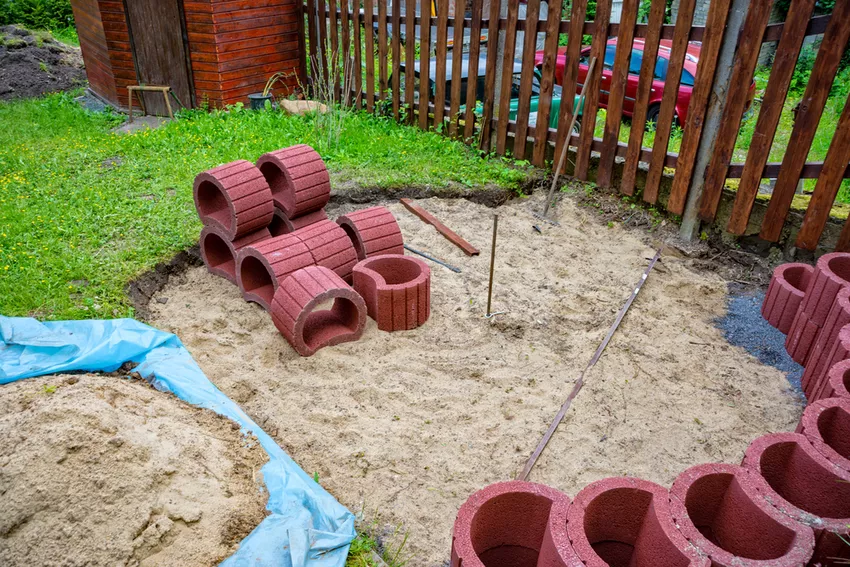What could be nicer than aromatic, flowering herbs next to your favorite seat in the garden, which decorate the plate fresh on the salad, on the grilled food or as a colourful, edible decoration? Even those who only have a small garden can save space with a herb spiral and still cultivate a large selection of their favorite herbs. Such a spiral is inexpensive and can be set up quickly with little effort.
 Plant stones can be used for a wide variety of garden projects
Plant stones can be used for a wide variety of garden projects
suitable material
Granite, sandstone, limestone and other natural stones look particularly pretty, but they are also very expensive. Instead, you can fall back on cheaper plant stones, which can just as well be grouted to form a stable wall - and lavishly planted with flowering herbs make a wonderful eye-catcher in the garden. Instead of plant stones, many other artificial stones are also suitable, such as (roof) tiles, paving stones, field stones, etc. The only important thing here is to build the wall in a stable and safe way and to fill the herb spiral with the right substrate.
You need this material
For a herb spiral you need:
- plant stones
- Mortar / cement (always mix fresh!)
- Gravel / rubble / broken stones (e.g. broken bricks)
- Sand gravel
- compost
- plant substrate
building instructions
Ideally, a herb spiral measures about two meters in diameter and is 60 centimeters high. With these dimensions you have a lot of space for herbs on the one hand, but still reach them very well for care and harvest. The spiral of plant stones is built as follows:
- First, limit the desired area for your herb spiral.
- Mark them with a wooden stake, string and stick.
- Lift off the top layer of soil to the depth of a spade.
- Fill the hole with drainage material.
- Rubble, crushed stone, broken stone residues and gravel are suitable for this.
- Build a spiral wall on this subsoil.
- This increases towards the middle.
- Grout the stones well.
- Now fill the interior with stone and rubble material so that a level surface (interrupted by the wall) is created.
- Here you first fill in the excavation that has been cleaned of plant and root residues.
- The zone-specific substrate layers with a thickness of 15 to 25 centimeters only come on top.
tips
At the foot of a larger herb spiral, you can lay out a hollow in the ground with pond liner and create a small pool of water here. Many moisture-loving herbs can grow near the water, such as meadowsweet and valerian.